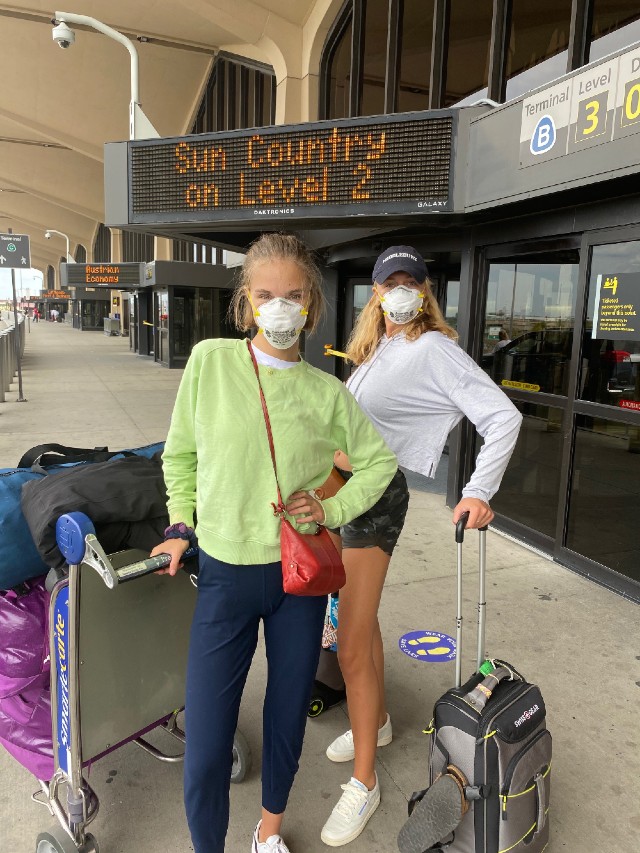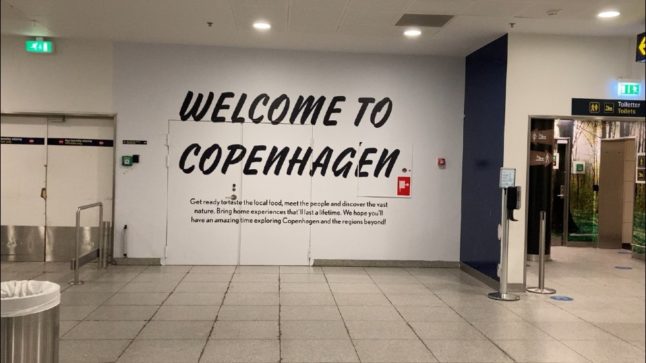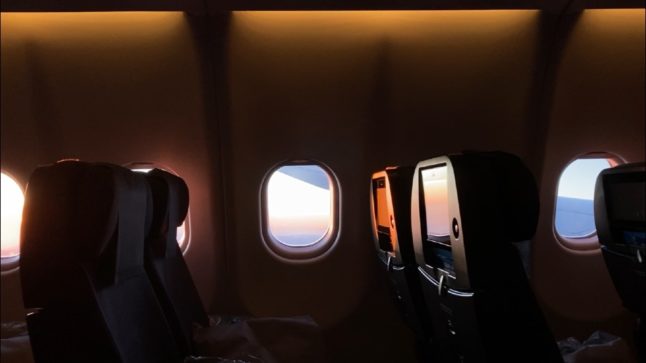Traveling to Denmark from the United States two weeks ago started as it usually does with me trying to fit as many clothes as I can into my duffle while keeping the weight under the 22-kilo limit imposed by SAS.
As a Danish-American citizen, I had been home with my family in the US since early December for Christmas and New Years’ after spending the fall in Copenhagen. My pre-pandemic plans had been to study abroad this fall in Denmark through the American program DIS.
But when the global outbreak of coronavirus forced my school, Georgetown University in Washington DC, to cancel all study abroad programs and convert to an entirely remote learning environment, I decided to get creative.
With Danish passports in hand, my sister, cousin, and I decided to move to Copenhagen in August. We would go to folkehøjskoler in Copenhagen, work on our Danish language skills, and spend some necessary time in Denmark before we all would have to apply to maintain our dual citizenship between the ages of 21 and 22.
I would continue to take a few remote university classes with Georgetown in the evenings over zoom. It seemed like a perfect balance.
At the time of our first move, in August, cases were minimal in Denmark. Daily totals were consistently under one hundred. Although this changed dramatically throughout the fall, the state of the pandemic had been substantially milder in Denmark than in our home state of Massachusetts in the US.
In the fall, while most of our American friends were inside going to zoom school all-day, we were able to go to our højskole classes in person, have social lives, and lead a pretty ‘normal’ life. Happy with the freedoms afforded to us here in Denmark, we decided that we wanted to come back in the spring and stay in Copenhagen until we all would hopefully resume in-person education at our American universities in the fall of 2021.
To make this plan work amidst a constantly evolving pandemic, we had to pivot many times.
Our original plan had been to return to Copenhagen at the beginning of January, but when the strict lockdown kept being reinstated, we decided to push our flight to February. When it was extended again in February, we pushed our flight once more.
All of this meant that we had to renegotiate contracts with landlords and change apartments several times. For those familiar with the real estate market in Copenhagen, I don’t have to tell you that this was not always easy. There were moments when we were unsure if it even made sense for us to come back.
But in mid-February when the overall state of the global pandemic was improving, vaccines were being distributed, and the Danish government began signaling an easing of the strict lock-down, my sister and I became eager again to return to Copenhagen.
In the end, we were able to make the journey. So what was it like?
In accordance with Danish restrictions, we had to get tested for Covid-19 twenty-four hours before boarding our flight. We got a rapid test locally, got our negative results, and then drove to the airport the next morning.
Our direct flight with SAS was leaving from Newark, New Jersey and when we arrived we were asked to present our negative test results at the same time and place that we were checking our luggage.

Security in New Jersey was normal except for the plexiglass panels that separated the lines. Notably, the airport was far closer to full capacity than when I flew to Denmark last August.
When we boarded the SAS plane, there were no more than twenty or thirty passengers – and it was a large, three-column plane. When I was trying to fall asleep, one of the flight attendants offered that I take up another row all to myself.
Unlike in years past, it was clear through my sporadic eavesdropping that almost everyone on this plane was Danish or Scandinavian. There was very little English being spoken on the plane. And rather than the exciting buzz and anticipation of tourism, there was a sense that most people were just on their way home.
This was confirmed when we finally arrived at the Copenhagen airport on Sunday morning.
After departing our plane, all passengers were directed to a Covid-19 rapid testing station.
All of the people being tested had a sundhedskort and most were presenting Danish passports. Just from observation, the only Americans present were those that either had a Danish partner traveling with them or were legal residents of Denmark for work purposes.
There, we waited in line for a short period of time before receiving our rapid tests. As expected, the results took around fifteen minutes and when my sister and I both received our negative results we headed to border control.
As Danish citizens, border control is usually a breeze, but this time we didn’t really know what to expect. Were we going to be asked the purpose of our travel? Did we need to present any documentation? Although we were fairly confident there would be no curveballs, we wanted to make sure we were prepared. Luckily our confidence was correctly placed and the border control officer only asked us to present our passport and the negative test result we had just received minutes prior.
We walked through the glass door giddy. Even though we had followed the government’s rules to the tee, we were relieved and excited to have gotten through. After picking up our bags we headed to the Metro which we rode home to our new apartment in the city, where we would be isolating.

Upon learning that we would not be allowed to go to the physical grocery store during our isolation, we figured out how to use Nemlig, the Danish delivery service and had all of our groceries sent to the apartment. It felt strange to be inside with no interactions with other Danes for the first week – it was hard to even remember that we were in a new country.
I happened to have a lot of school work during that week and I was also often up late at night conducting interviews with American sources for stories I was writing. This kept me busy, but it was also disorienting to have my whole day taken up by American activities and work while I was adjusting to being back in Denmark.
On the fifth day of being in isolation, I took the Metro back to the airport for the Covid-19 test that would let me out of quarantine.
Getting back on the train and being around people in the city during the week in which everything was starting to open up again was a breath of fresh air. The sun was shining and it felt like Copenhagen was invigorated. I counted down the hours until my results were returned. When I saw the latest “IKKE PÅVIST” (not detected) on the health page, I did what any newly-free Copenhagener would do and booked a time to pick up a Noma veggie burger and Bloody Mary.



 Please whitelist us to continue reading.
Please whitelist us to continue reading.
Fun to read this! We came from Massachusetts to CPH recently for a few months for work, also after delays and negotiations, with ever-changing situations…and had some similar experiences – from the 15 passengers on the flight, no other Americans and giddiness after entry after much planning, to using Nemlig…even to the POPL burger and Bloody Mary! Back then we did a COVID test at Strøget and things were a lot quieter than they are now. Hoping schools open soon here, that students can make it to Denmark soon, and that you get back to college in the US in the fall.